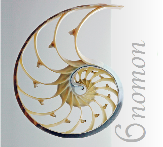



 NEXT
NEXT
 BACK
BACK
 Forum
Forum


Philosophical musings on Quanta & Qualia; Materialism & Spiritualism; Science & Religion; Pragmatism & Idealism, etc.




Soul Separation
or
Hallucination?
Post 102. November 02, 2019
Out of Body Feelings
OOBE do, or Don’t
We don’t normally see or imagine our bodies from a top-
At first, she was convinced that her spirit had left her body, confirming both her religious training,and the Cartesian dualism of mortal Body & immortal Soul. But, over the next few years, she became disillusioned by the failures of her research to confirm the implications of that theory. So, she gradually evolved from a believer to a skeptic — not of the reality of the experience, but of its theoretical interpretations. Spiritualists of all kinds had developed intricate theories of how the mind & body were interrelated and how they could operate separately. Centuries of such beliefs, in a variety of cultures, had produced a broad spectrum of drugs and practices that could facilitate the release of the aethereal Soul from its fleshly prison. Therefore, she set about testing many of those theories and techniques to see what actually happened — to separate verifiable facts from anecdotal fictions.
Psychologists at the time were typically Monists2 and Materialists. So they doubted the existence of a sublime parallel realm of ghosts & demons beyond the reach of mundane empirical Science. Parapsychologists tended to be Dualists3 and Spiritualists, who nevertheless felt impelled to find objective evidence to support their faith in an idealized super-
After a thorough review of world myths, historical records (including scriptures), and of parapsychological research, she concluded that “sadly, none of these occult theories solves the mind-
Post 102 continued . . . click Next
4. I am what I think I am :
The Human Soul or Self does not exist in a physical material sense. Instead, its “reality” is metaphysical and immaterial. It is a general holistic concept that refers to specific material parts. The United States exists as the idea of human communities bound together by a common belief. There are actual physical correlates of the US, but none of them is the ding an sich.
5. Super-
Plato taught that the ultimate reality, beyond the veil of the mundane world, was the realm of perfect Ideas or Forms. Aristotle tried to refute Idealism, but his treatise on Metaphysics was all about our ideas of reality.
“Or the self is like a unicorn, a mythical being whose representations exist, but who is actually imaginary.”
___Rick Hanson
“Thought is itself the thinker”
___William James
1. Parapsychology :
The study of mental phenomena which are excluded from or inexplicable by orthodox scientific psychology (such as hypnosis, telepathy, etc.).
2. Monist, Monism :
Monism assumes that there is a single “substance” as the foundation of reality. For Spiritualists, that “stuff” is immaterial yet powerful Spirit. For Materialists, the building block of reality is Matter, idealized as Atoms. For Enformationism, the essence of the world is Generic Information, which has both Physical and Metaphysical properties. All of these proposed poly-
3. Dualist, Dualism :
Dualists believe that the world is inherently divided into two incompatible categories. Mind & Matter, or Soul & Body. They are normally found together in nature, but are only loosely bound, and can exist separately in their true habitats : subjective spiritual or objective physical realms.

Seeing Myself
The New Science of Out-
Susan J. Blackmore
Psychologist & Parapsychologist
Dualism vs Non-
Astral Travel vs Hallucination
Near Death vs Afterlife
